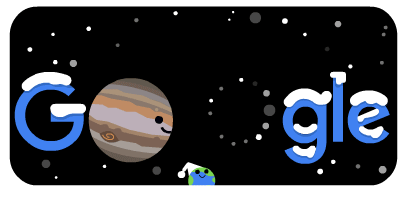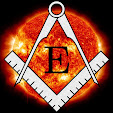 | |
| Google's Doodle to mark the Event |
The 7 'planets': ☉, ☾, ♂, ☿, ♃, ♀, ♄ (in week day order*), and the 12 constellations of the Zodiac: ♈, ︎♉, ︎♊, ︎♋, ︎♌, ︎♍, ︎♎, ︎♏, ︎♐, ︎♑, ︎♒, ︎♓ (in order as on the Ecliptic) give us a natural celestial clock. The zodiac signs are the face markers and the visible 'planets' the seven 'hands'.
* I never could figure out why the weekdays are ordered this particular way.
The moon completes a full zodiacal circle in 28 days*, and acts as the day-of-the-month hand. The sun moves a zodiacal sign per month, and is thus the month hand. It should be no surprise that by learning to read the hands of a clock one can make all sorts of useful predictions about periodic phenomena.
* Since 365/28 ≈ 13, 13 months and 13 zodiac signs would make more sense. However, Babylonians had problems computing interest payments with 13, and today, too many people fear the number 13, so this 'reform' is not going to happen anytime soon. Even cultures which follow a lunar calendar, like the Telugu calendar call the 13th lunar month as simply 'extra' month and don't have a name for it. Again, I don't know why.
The other visible planets have more complicated movements, with Saturn
taking the longest to complete a full cycle of the ecliptic/zodiac, and
Mars having the most obviously mysterious movement (Jupiter and Saturn also have the same mysterious or retrograde movement, but take much longer to complete). Accurate measurement
of Mars' movements by Tycho Brahe and the spiritually inspired passion to make sense of these
measurements, and thereby understand the 'mind of God', by Kepler and later Newton yielded classical physics. "As above, so below".
 | |
| Kepler's initial solar system model (Mysterium Cosmographicum) based on the 5 perfect solids was inspired by Kepler's deeply held belief that Gott's creation had to be perfect in every way. In this view, the reason there are 5 planets is because there are 5 perfect solids. As per Carl Sagan (COSMOS Episode 3), when Kepler finally realized that the orbits of Mars, Jupiter and Saturn could only be fit by ellipses and not perfect circles, Kepler's faith in Gott was shattered. This faith shattering theological problem, along with others, was 'solved' by Leibniz's "Best of all possible worlds" theology. |
My preferred interpretation of astronomical combinations is as useful mnemonics. My basic mnemonic code is:
♀: Play, maximize this
☉: Food, eat carefully
☾: Sleep enough
♂: Exercise regularly
☿: Work, minimize this
♃: Good Judgement, cultivate this
♄: Good Luck ('Unknown unknowns')
So, for the great conjunction: ♃♄, my mnemonic interpretation is:
"Good Judgement ultimately meets Good Luck".
Of course, if we forget that these are merely mnemonics, then we move into Astrology.





No comments:
Post a Comment